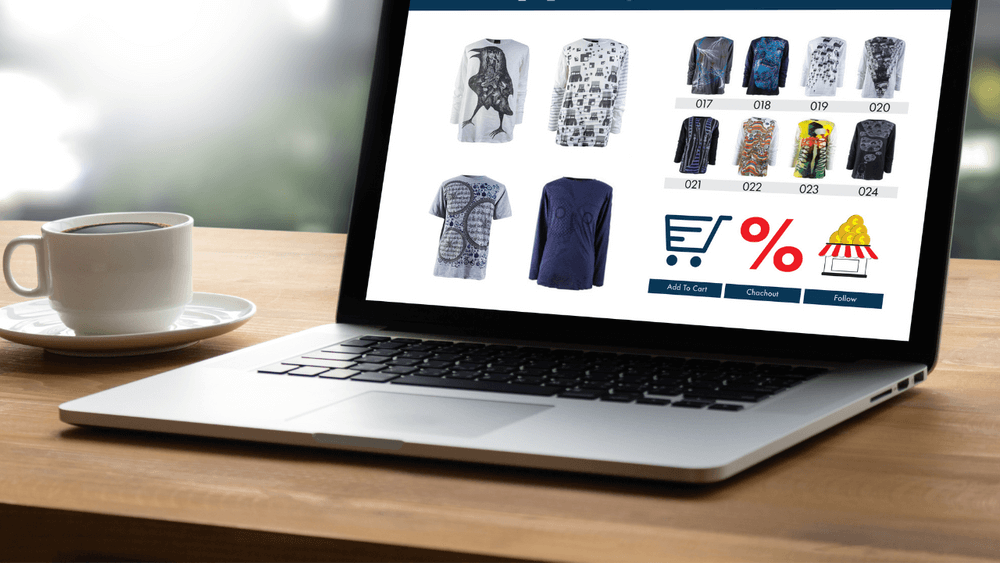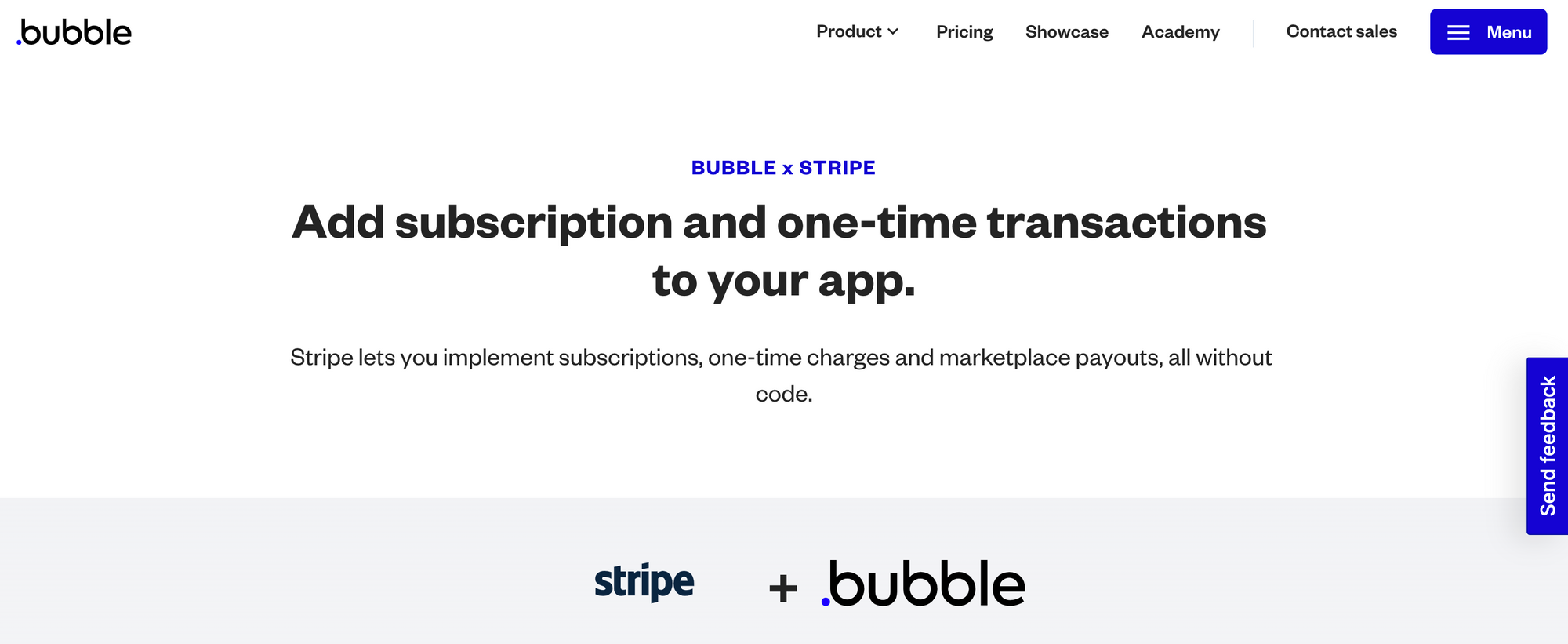E-commerce accounted for 20% of all retail sales worldwide in 2021, and it's expected to grow dramatically in the coming years. Customers enjoy the convenience and selection available through online shopping. Businesses have the opportunity to open their digital storefront to anyone in the world.
Today, an e-commerce website has become almost synonymous with the brand in the eyes of the consumer. It makes up a crucial part of a customer's experience when interacting with a company. When it comes to building a successful e-commerce website, you no longer need to use traditional software development—here are nine tips anyone can use to develop an e-commerce website.
Tips for Developing a Successful E-Commerce Website

Determine your business model and target audience.
The business model for a site helps guide several important website design decisions. A B2B site has different concerns from a B2C site. Understanding your target audience and looking at what the competition is doing will influence your branding and positioning in the market. Conduct market research to validate your business concept within the current consumer behavior and economic trends.
Select the best platform and content management system (CMS) for your online store.
One of the most critical decisions in e-commerce website development is selecting a platform, as it will be the foundation on which you build your website. Great platforms should make it easy to create interactive sites comprised of dynamic content and robust e-commerce capabilities. User and account management should be provided out of the out-of-the-box. All of the common concerns involved with building a site should be addressed by the platform, so that you can focus on what makes your business unique.
The platform's content management system allows you to create and edit the content on your site quickly without needing to use programming languages such as HTML and Javascript. A good CMS provides text editors and page templates so you can write articles and blog posts and manage multimedia content, including images and video.
An effective, easy-to-use CMS will be important because you want to keep your site updated with the latest information and products as they become available. No-code platforms like Bubble enable anyone to create pixel-perfect designs and build a custom e-commerce CMS without needing to code in HTML or CSS. Responsive templates result in apps that look great on mobile devices right out of the box. Site design tools should have themes and styles that realize the vision for your brand and create the experience you want for your customers.
Focus on search engine optimization (SEO).
Given the vast number of websites and content available today, a key measure of success is the ability to get traffic to the site. Search engine optimization, or SEO, includes a set of techniques that help customers find your site using search engines like Google. Sophisticated page ranking algorithms determine what content is the best for people who perform particular searches.

Search engines generally consider the content's relevance and usefulness based on several indicators. Thus, creating good, original content is the first step, but there are also techniques you can use to help get your site near the top of the results for a given set of search keywords. Choosing the right keywords is essential, and SEO tools help you understand the competition and search volume for sets of keywords. Low competition keywords with high search volume provide an excellent opportunity for businesses. After selecting the right keywords, be sure that titles and headers within your pages contain the relevant words and phrases and be sure to structure your site in an intuitive manner that makes it easy to find key pages.
Site performance and speed are critical.
According to Google Search Central, "two seconds is the threshold for e-commerce website acceptability." Their goal is response times less than half a second. The website's speed is important if you want to make conversions, as customers lose patience quickly. Customers should be able to find what they're looking for fast and easily on your site and conduct transactions. There should be as little friction as possible, and wait time is a quick way to lose out on potential business.
Many sites load a key portion of the site first, allowing the user to begin interaction before all the elements are loaded. Performance metrics should consider the time to First Contentful Paint (FCP) as well as a measure of how long it takes to load every element. Even if it takes longer for all page elements to load, the perceived performance can be much better when the FCP is under two seconds. Having a mobile responsive web app design can also improve site performance.
Feature high-quality images and videos.
These days, people typically have a short attention span and will leave a website after about 10-20 seconds if it doesn't capture their interest. One of the quickest ways to grab a user's attention is through high-quality images and videos. Product photos are especially critical in online retail because they give the customer a chance to get a sense of the product before it is in their hands.

Use a mobile-first strategy when considering site design.
Google uses mobile-first indexing, meaning they use "the mobile version of the content for indexing and ranking." More than half of web traffic comes from smartphones. You must ensure optimization of your site's pages for mobile devices. Optimization includes using responsive themes that look great on mobile devices and desktop computers. If customers can't easily conduct business with you using their phones, you will be missing out.
Plan for product inventory and shipping management.
Your customers have added items to their cart and are ready to checkout, but then they leave, and those items are abandoned. Two of the most common reasons for this are unexpected shipping costs or delays. Be sure to consider how you will manage your inventory and offer shipping services that meet your customer’s needs.
Some CMS platforms come with their own ready-to-use checkouts; others, like Wix and Squarespace, currently offer e-commerce features as an extra charge on top of a basic website. With Bubble, you can build your own checkout on the platform at no extra cost, and even make a marketplace like Amazon possible.
Factor in security and compliance from the beginning.
A secure, trustworthy online presence is essential when dealing with payment and personally identifiable information (PII). Customers must have trust in your site to do business with you online. Beyond garnering basic customer trust, there are also compliance considerations for e-commerce sites. For example, sites accepting credit card payments must be compliant with Payment Card Industry (PCI). Data security using end-to-end encryption and privacy are essential components of a secure e-commerce website. Platforms like Bubble include free, automatic SSL certificates for all websites, multi-factor user authentication, and integration with secure payment systems like Stripe and PayPal.
Offer suitable payment options for your customers.
An important convenience for customers is the ability to use their preferred payment method. Some customers might leave a site if it doesn't offer their desired payment method as an option. In addition to credit card payments, services such as PayPal and Apple Pay are increasingly offered as options. Based on your business model and pricing, consider buy-now-and-pay-later alternatives as well.
Building E-Commerce Website Faster With Bubble

E-commerce web development can be complicated. As our list of tips illustrates, many important design and implementation considerations will determine your website's success. Building a great e-commerce site takes time and can be expensive if you hire great talent to build it. However, a scalable platform like Bubble eliminates these hurdles by providing you with a powerful no-code platform for creating and designing fully functional, responsive, digital products yourself.
Bubble has already incorporated leading e-commerce technologies and best practices so that you can focus on your business and its web storefront, not the underlying technology. With Bubble, you get:
- Scalable infrastructure
- Customizable design
- Integrations with other CMS platforms like Squarespace and WordPress
- Integrations with third-party payment options like PayPal, Stripe, Plaid, and Coinbase
- Popular SEO and analytical tools
While it’s easy to build a marketplace website and web apps with Bubble, it by no means limits the design or functionality of your site like other out-of-the-box solutions might. It’s so much more.
About Bubble
Bubble is a leader in the no-code movement. Bubble offers a powerful point-and-click web editor and cloud hosting platform that allows users to build fully customizable web applications and workflows, ranging from simple prototypes to complex marketplaces, SaaS products, and more.
Over 2 million users are building and launching businesses on Bubble — many have gone on to participate in top accelerator programs, such as Y Combinator, and even raised $365M in venture funding. Bubble is more than just a product. We are a strong community of builders and entrepreneurs who are united by the belief that everyone should be able to create technology.
Build for as long as you want on the Free plan. Only upgrade when you're ready to launch.
Join Bubble







